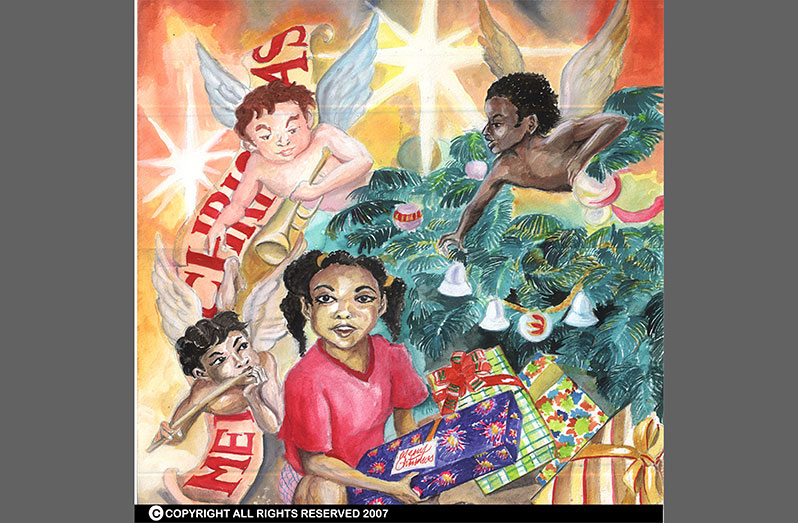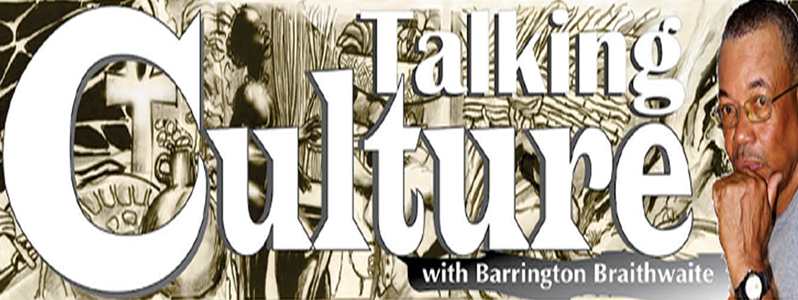Is it paying attention to children’s or adults’ festive moods?
I GREW with my Godparents. I have always had a clear-cut perspective of where I stood with Christmas. Having good marks in the passing June/July school exams was a great incentive towards. If you went on the school trip over the August school holidays, and if Santa would answer your letter for Christmas, to consider it. There were a lot of reasons why children believed first in the magic of the converted German folk devil Krampus, who took bad children into his dark realm, merged somehow with Saint Nicolas and in European countries with Zwarte Piet ( Black-African Pete). The latter usually dressed up in the costume of a medieval Moor, said to be Santa’s (or sometimes Odin’s assistant) who recorded the behaviour of children over the year, with deeper symbolisms that harkened to the pagan, post-pagan, to the Moorish presence, then, to the era of Christendom. Then came the mesmerising collection of Christmas songs, my adult favourite album beng the Stevie Wonder Christmas Collection. The imagination of children must be allowed to exist and travel the fantastic worlds of imaginary creatures, beings and places, while bejng guarded and protected from the real threats from within and without the sanctuaries of childhood. Until with adolescent maturity and room for transition, can translating the incentives of symbolisms be discussed and understood.
The case I’m making for the focus on children revolves around the very New Testament’s narrative concerning the birth of the child Jesus, who became the Christ or the Khemetic ‘ ma? Kheru as referred to by the archaeologist Wallis Budge. The story of the presence of the birth of Christ, as defined by the astrologists of Elam-Persia, the Magi, according to the narrative, had led to the murder of countless male toddlers below the age of two years old, truly a gruesome act of human sacrifice, extracted upon innocence. Some years ago, I had drafted the treatment for a play based on this event, only that I had not linked it to Christmas but to the later death of the Christ; I had spoken then to a late priest who advised me against furthering my idea from either into drama or as a graphic storyline. Due to respect for a good human being, with close ties to my wife’s family, I shelved the treatment. But this dreadful event of infantile slaughter, when translated from its religious record, needs clarification, it remains a mystery and not contextualised. But in reference to this event and the loss of innocence before and still in our age, Christmas is the only season that has an option (regardless of its obviously narrow commercial objectives) that can be directed to a special joy of childhood. The toy industry recognised that toys were always a feature of humankind over thousands of years. This was a faculty that had matured and was inseparable from the needs of children. At times, it superseded feasting. Here, children had to be stopped from play-time to eat breakfast or lunch. It is also obvious that ‘evil’ also recognises the power of toys. On our platform, people who support the selling of narcotics to the stress-overcome parents of underprivileged children are out there at Christmas sharing toys to the very child victims, as instructed by their ‘Wuk People’ and the faint residue of conscience that still lingers. The fact is that toys are integral to the growth of children, it plays a part in the maturity of the mind; the ancient peoples of all continents knew that, in interviews with astronauts, many of them confessed to childhood fascinations with Sci-Fi comics and movies. Without doubt, Christmas is a time for children-the nurturing of their creative faculties.
 What happened in Guyana? Simple, Guyana was caught in the clutches of the Cold War, and was fated as other non-oil producing nations to suffer to the ‘Oil Crisis’; private manufacturing suffered along with exports. Avoiding the tentacles of the IMF had its consequences, the economic squeeze forced redeployment, and survival in homes depended on contraband smuggled in from neighbouring states. Many of the old department stores could not import as the Guyana dollar declined. This was the age of the suitcase traders, following that however the narcotic trade provided the new money to some, misery for many others.
What happened in Guyana? Simple, Guyana was caught in the clutches of the Cold War, and was fated as other non-oil producing nations to suffer to the ‘Oil Crisis’; private manufacturing suffered along with exports. Avoiding the tentacles of the IMF had its consequences, the economic squeeze forced redeployment, and survival in homes depended on contraband smuggled in from neighbouring states. Many of the old department stores could not import as the Guyana dollar declined. This was the age of the suitcase traders, following that however the narcotic trade provided the new money to some, misery for many others.
Many of the traditional old department stores were sold, but the people who replaced them had no idea about the culture of department stores, nor for some reason, they could not have access to the standard manufacturers, among them the toy manufacturers, thus went the old window-shopping custom with ice cream and the children, and slowly the rise of street crime, Water Street died. The priorities for children slipped off the landscape, leaving cheap household items predominant. The other factor is that of the owners who replaced the colonial to post-independence department stores, most of them lacked the display culture aesthetics, few sustained any such resemblance, for toy displays it’s Home and Beyond, Austin’s Bookstore Scientific Toys and Fogarty’s (used to, it seems) with the rest, it’s a minuscule stock, and not where the toys high interests are.
What cannot be disputed is that beyond the Black Cake, Pepper-pot, Ham, Baked Chicken etc., the case has been made for Christmas as a children’s holiday, denied by economic realities, or lack of cultural awareness but deep down inside, whether we ignore the silent pleading in our children’s eyes, before the mirror, we do understand, it’s their holiday




.png)









